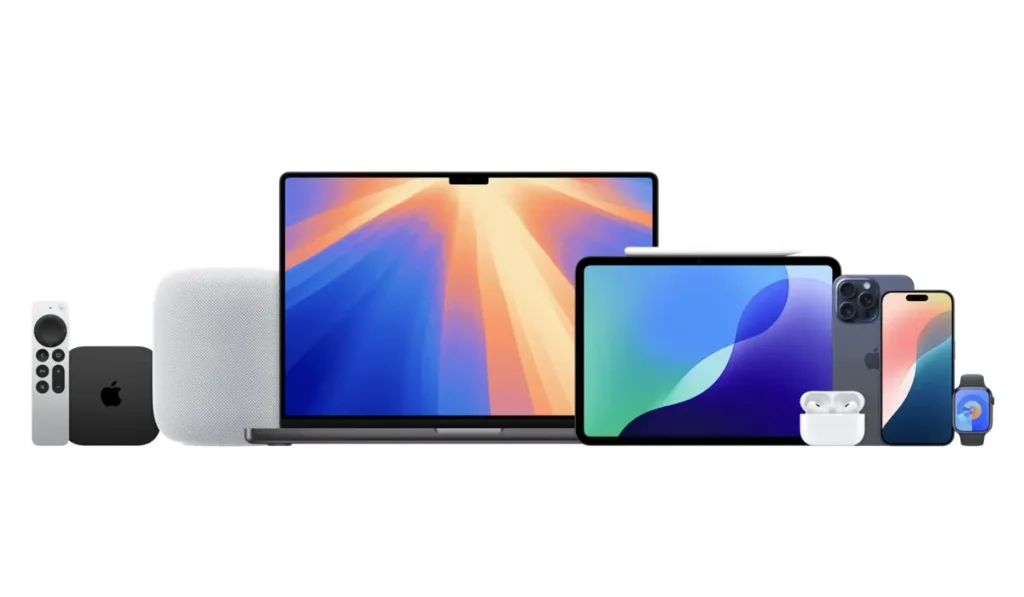In a surprising shift that could dramatically reshape how we think about Apple’s software updates, Bloomberg’s Mark Gurman reports that Apple is planning to abandon its current version numbering system—think iOS 19 or macOS 16—in favor of year-based naming conventions. Starting with the updates announced at WWDC 2025, we could soon see operating systems named simply iOS 26, macOS 26, watchOS 26, and so on.
This move, expected to be announced during the Worldwide Developers Conference in June 2025, signals a deeper shift not only in Apple’s branding but also in its approach to unifying its platforms under one simplified umbrella. Here’s what we know and what it means for you.
Goodbye to Confusing Version Numbers
Currently, Apple’s operating systems are all over the place in terms of numbering:
- iOS 18 (likely next)
- macOS 15
- watchOS 11
- visionOS 2
- tvOS 18
- iPadOS 18
If you’re not someone who closely follows tech news, these disparate version numbers can be confusing. Are they all released at the same time? Are some older than others? Are they even part of the same ecosystem? With the switch to a year-based system, all major Apple OS platforms would align under a single version year—a change that simplifies things for consumers and developers alike.
Instead of juggling iOS 19, macOS 16, and watchOS 11, you might just see iOS 26, iPadOS 26, macOS 26, tvOS 26, watchOS 26, and visionOS 26—all unified and representative of a cohesive yearly update.
Why Apple Is Making This Change
According to Gurman’s report, the primary reason behind the change is to reduce confusion and align branding across platforms. Apple currently has six operating systems running on different devices, and their version numbers no longer line up in any meaningful way. A user might wonder: If my iPhone is on iOS 18 and my Mac is on macOS 15, are they both up to date? The shift to version numbers based on the following year will bring clarity to both consumers and IT professionals.
For example, an update launching in September 2025 will be labeled “26” to reflect its intended use throughout 2026. This makes logical sense, as Apple’s OS updates typically debut late in the year and remain current for the next 12 months.
A Visual Overhaul Is Coming Too
Alongside the new naming system, Apple is reportedly preparing a major visual overhaul of its operating systems. This redesign will draw heavy inspiration from visionOS, the interface that powers Apple Vision Pro.
That could mean:
- A more immersive and spatial interface
- Rounded window elements and translucent layers
- New animations and design principles that emphasize fluidity and depth
Most interestingly, Apple is taking another stab at improving multitasking on iPad. Past attempts—like Split View, Slide Over, and most recently, Stage Manager—have all aimed to make the iPad a more capable productivity machine. However, none have fully captured the ease of use that desktop systems like macOS provide. Apple’s new interface may finally bridge the gap between tablet and desktop, especially for power users.
How This Compares to Other Software Naming Conventions
While Apple has long used sequential version numbers for iOS and macOS, many major platforms have already moved to year-based naming. Microsoft Office, for instance, uses year-based releases (e.g., Office 2021). So does Windows Server (e.g., Windows Server 2022). Even Linux distributions like Ubuntu use a “YY.MM” format, such as 24.04.
In some ways, Apple is playing catch-up with this shift—but doing so in a uniquely Apple way: tying all six of its operating systems into a single version number and likely marketing the changes as part of a broader “platform unification” strategy.
Even Apple’s Mac hardware has used year-based identifiers for a long time. For example, you might see a product labeled “MacBook Pro (2023)” instead of referencing a model number. This change on the software side brings that same intuitive clarity to operating systems.
What This Means for Developers and IT Teams
From a development standpoint, aligning all platforms under a single yearly version simplifies a lot of things:
- Unified compatibility charts and documentation
- Easier planning for testing and support
- More predictable rollout schedules
For IT departments managing fleets of Apple devices, this change makes version tracking and software management more straightforward. Instead of checking different numbers across different devices, teams will know: if it says “26,” it’s the latest version for this cycle.
What You Can Expect at WWDC 2025
If this report holds true, WWDC 2025 will be one of Apple’s most significant developer conferences in years. Expect announcements to include:
- A new naming convention across all six operating systems
- Redesigned UI across iOS, macOS, watchOS, and others
- Improvements to multitasking, particularly on iPad
- More synergy between visionOS and Apple’s other platforms
- Possibly even some clarification on what features will ship across devices under this new umbrella
It’s a big deal—not just because it changes how we refer to these updates, but because it reflects a shift in how Apple sees its ecosystem evolving.
Final Thoughts
The era of iOS 19 and macOS 16 might be ending before it ever truly begins. In its place, Apple appears poised to adopt a cleaner, more unified, and forward-looking naming structure that simplifies life for users and developers alike. The new system reflects not just a change in branding, but a broader effort to bring Apple’s platforms closer together—both in function and in form.
If the reports are accurate, you’ll soon be downloading iOS 26, macOS 26, and visionOS 26—a change that may feel strange at first but could be exactly what Apple’s increasingly complex software ecosystem needs.
Don’t forget to check our article about iPhone 17 Pro Max and Pro: Release Date, Price, Specs, and More for more tech news.







